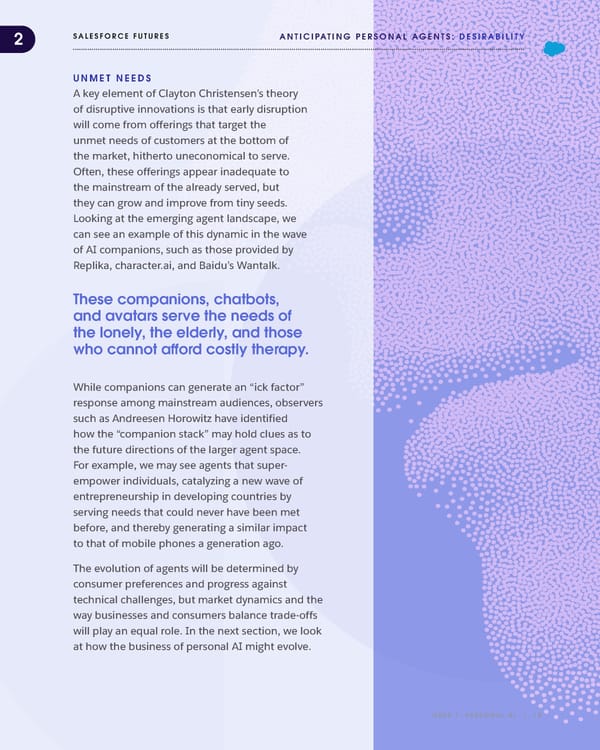2 SALESFORSALESFORCE FUTURESCE FUTURES ANTICIPATING PERSONAL AGENTS: DESIRABILITY UNMET NEEDS A key element of Clayton Christensen’s theory of disruptive innovations is that early disruption will come from offerings that target the unmet needs of customers at the bottom of the market, hitherto uneconomical to serve. Often, these offerings appear inadequate to the mainstream of the already served, but they can grow and improve from tiny seeds. Looking at the emerging agent landscape, we can see an example of this dynamic in the wave of AI companions, such as those provided by Replika, character.ai, and Baidu’s Wantalk. These companions, chatbots, and avatars serve the needs of the lonely, the elderly, and those who cannot a昀昀ord costly therapy. While companions can generate an “ick factor” response among mainstream audiences, observers such as Andreesen Horowitz have identified how the “companion stack” may hold clues as to the future directions of the larger agent space. For example, we may see agents that super- empower individuals, catalyzing a new wave of entrepreneurship in developing countries by serving needs that could never have been met before, and thereby generating a similar impact to that of mobile phones a generation ago. The evolution of agents will be determined by consumer preferences and progress against technical challenges, but market dynamics and the way businesses and consumers balance trade-offs will play an equal role. In the next section, we look at how the business of personal AI might evolve. ISSUE 1: PERSONAL AI | 18
 Salesforce Futures Magazine Page 17 Page 19
Salesforce Futures Magazine Page 17 Page 19